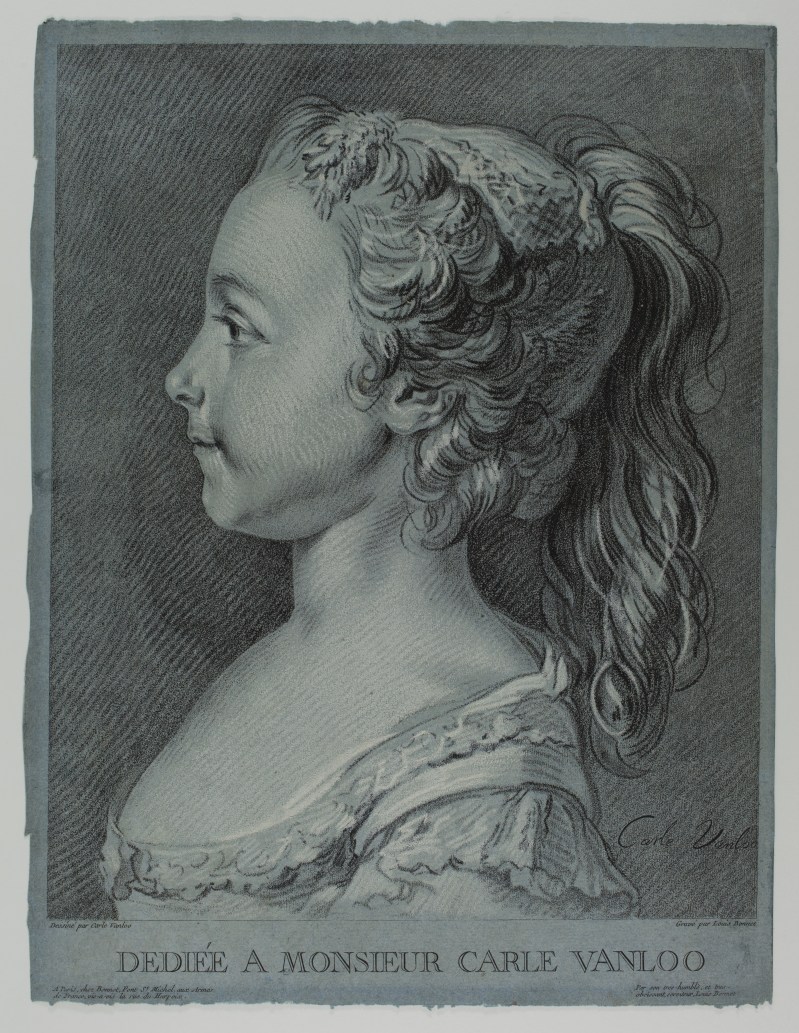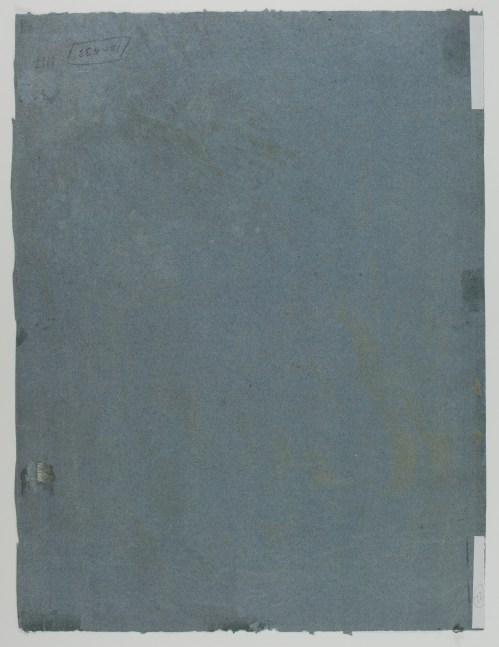Louis-Marin BONNET: Marie-Rosalie Vanloo - c. 1764
Price: 4500 €
Crayon manner printed in black and white on blue paper, 402 x 302 mm. Hérold 55a, 2nd state (of 5).
Impression of the 2nd state (of 5) before replacing the address of Bonnet, Pont St. Michel, in Paris, by that of the widow Chéreau.
Very fine impression. Roughly trimmed to the borderline. A few tiny pinholes in the subject, and a small crease in the upper right corner, otherwise in very good condition and freshness.
Provenance: Roland de Perthuis (1927 - 2016), his mark printed in black on the back (Lugt 4237).
From 1757, the printmaker and printer Jean-Charles François developed the technique of engraving in the chalk manner (imitating the sanguine drawing) by using in particular the roulette, which was used until then only to add some details to a print. This manner was imitated by Gilles Demarteau, Alexis Magny, Thérèse-Éléonore Lingée and Louis-Marin Bonnet who perfected the technique as Margaret Morgan Grasselli explains: “Bonnet was not content simply to turn out print after print in the standard chalk-manner technique. Instead, this inspired and determined innovator expanded the possibilities of the medium in a variety of directions. One of his first innovations was the formulation in about 1763 of a white printer's ink that could effectively imitate the appearance of white chalk and white gouache, but would not turn yellow or black over time. This new ink revolutionized chalk-manner engraving and greatly expanded the types of drawings that could be reproduced in prints.” (Colorful impressions, p. 54). Bonnet did not share the secret of his technique and was thus the only one to print with white ink (see on our site the detail of this technique in the description of our impression of the Première tête, aux trois crayons, engraved after Boucher (1765/1767) opposite).
The choice of paper was also important for the final result of the test. "Printing black-and-white impressions on blue paper was a favorite variant, for the blue of the paper not only added an extra dimension of color, but also enhanced the brightness of the whites and their contrast with the blacks." (Colorful impressions, p. 55).




